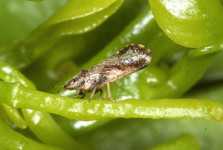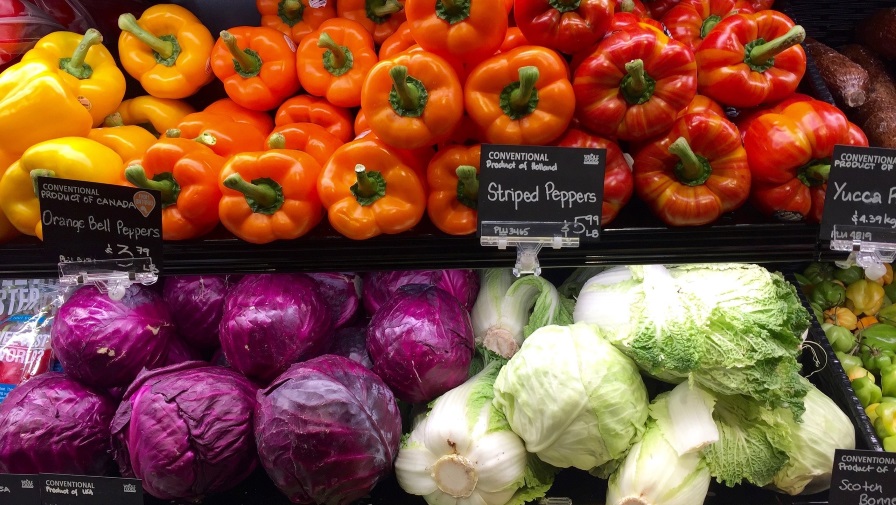Taking (Bio)Control Of Citrus Pysllids

For the first time in California, a natural enemy of the Asian citrus psyllid is being released in many parts of the southern part of the state in attempt to protect the Golden State’s $1.1 billion citrus industry.
University of California-Riverside scientists are spearheading the effort, and in fact the first release of Tamarixia radiata – tiny, stingless parasitic wasps that lay eggs in Asian citrus psyllid (ACP) nymphs – was done in a citrus grove near the UCR Botanic Gardens. A total of 281 wasps (95 males and 186 females) were released by Mark Hoddle, the director of the Center for Invasive Species Research, and UC Riverside Executive Vice Chancellor Dallas Rabenstein.
Since the symbolic first release in late December, Hoddle reports they have raised and released thousands of Tamarixia in many locations, including Los Angeles, Mira Loma, Glen Avon, Bell Gardens, and Pico Rivera. In addition, Hoddle said in an eMail that they will be releasing thousands more in Pomona, Arcadia, and Azusa.
According to a UC-Riverside press release, over the next several years, UCR and California Department of Agriculture Food and Agriculture (CDFA) scientists will raise thousands more Tamarixia for release throughout California. The Tamarixia larvae will eat the ACP nymphs, killing them, and emerge as adults about 12 days later. Adult female Tamarixia also eat other ACP nymphs, killing many in the process.
“We anticipate that over the next year or so thousands of these parasitoids from Pakistan will be released throughout Los Angeles, Riverside and San Bernardino counties and other areas as the pest continues to spread,” Hoddle said. “Once Tamarixia establishes, it will move and find new populations of ACP to attack and kill.”
Hoddle, a biological control specialist in the Department of Entomology, collected colonies of Tamarixia radiata during four trips to the Punjab region of Pakistan during the past 18 months. Christina Hoddle, his wife and an assistant specialist in the department, was an integral part of the field work in Pakistan.
In total, about 1,500 parasitic wasps were brought to Riverside from Pakistan under permit from USDA-Animal and Plant Health Inspection Service. Twelve colonies were quarantined on campus. Late last year, state and federal authorities cleared Tamarixia from quarantine with the issuance of a permit to release this natural enemy for establishment in California. The parasitic wasps do not bite or sting people or animals. Safety testing in quarantine demonstrated that the parasites are disease free and pose no environmental risk.
Hoddle explained that the Indian subcontinent is likely part of the ACP’s native range. The first study of the pest was published in 1927 by scientists in the region. ACP is now found in parts of the Middle East, South and Central America, Mexico and the Caribbean. In the United States, this psyllid was first detected in Florida in 1998 and is now also found in Louisiana, Georgia, South Carolina, Texas and Arizona. In 2008, the pest was detected for the first time in California in San Diego and Imperial county backyard trees. Large ACP populations are now well established in urban areas of Los Angeles, San Bernardino and Riverside counties.
The ACP feeds on citrus and close relatives of citrus. When the psyllids feed on leaves and stems, they damage the tree by injecting a toxin that causes leaves to twist and die. More importantly, however, is the psyllid’s ability to spread a bacterium that causes Huanglongbing disease. Huanglongbing, also known as citrus greening, is one of the most harmful diseases of citrus worldwide. The leaves on infected trees turn yellow, the fruit becomes bitter and eventually the tree dies. There is no known cure for citrus, and this plant disease is not a risk to people.
Huanglongbing has made its way to Mexico and Florida, but so far it has not been detected in California. Currently, the citrus industry is dependent on insecticide sprays to control ACP and prevent the introduction of Huanglongbing. Citrus entomologist Elizabeth Grafton-Cardwell, an extension specialist in the Department of Entomology and the director of UC’s San Joaquin Valley citrus research center, welcomes the promise of biological control with introduced natural enemies.
“This is very good news for the integrated management of Asian citrus psyllid and a highly significant contribution of the University of California,” she said. “Parasitoid releases will add a new and exciting component to the management program for ACP, especially for the many homeowners who have citrus trees in their yards.”
Hoddle said Tamarixia won’t eradicate ACP, but scientists predict it will reduce the densities of the pest, giving other control practices a better chance of working.
“Every ACP killed by Tamarixia will be one less pest for homeowners and commercial citrus growers to worry about,” he added.
Commercial citrus producers in California will still need to apply insecticides to control ACP and prevent the spread of Huanglongbing, should the disease be found in the state. However, the frequency of these applications may be reduced because Tamarixia will be killing ACP nymphs that would have otherwise grown into adults in the absence of this natural enemy.
Hoddle collected the parasites in collaboration with scientists in the Department of Agri-Entomology at the University of Agriculture in Faisalabad (UAF), Pakistan. According to Hoddle, UAF was an ideal base for the project because it had citrus research plots infested with ACP that had not been treated with insecticides. The university is also situated near local commercial citrus production, the area has a climate similar to citrus-growing regions of California, and the university’s vice chancellor is a UCR alumnus who also has an active research program on Huanglongbing in Pakistan.
In March and April 2011, Hoddle spent four weeks at UAF to set up research plots in kinnow and sweet orange trees. Coincidentally, kinnow is a mandarin that was bred at UCR in 1935 and accounts for 85 percent of citrus produced in the Punjab. Hoddle and his Pakistani colleagues collected 24 male and 56 female Tamarixia radiata, which were brought back to UCR to establish colonies.
At UCR, the colonies of Asian citrus psyllid and their natural enemies are double caged, kept in secure rooms. Workers wear coveralls, which are removed in designated changing rooms once work is completed for the day.
Hoddle returned from a June 2011 trip to Pakistan with 151 male and 255 female Tamarixia radiata. An October and November 2011 visit netted another 800 parasitic wasps.
“Gathering insects from citrus plants in the Punjab generated an immense amount of curiosity,” he said. “Kids in particular were super-curious about what we were doing, where we had come from and why we had come to Pakistan. The people in the Punjab were incredibly courteous, polite and generous.”
Hoddle has trained a Pakistani graduate student at UAF to monitor the interaction of the ACP with its natural enemies in their native environment. The researchers will determine whether other natural enemies of the pest could provide additional biological control of California ACP in the future.
Funding for the Asian citrus psyllid biocontrol effort was provided by the CDFA Specialty Crops Program, the USDA Citrus Health Response Program, the Citrus Research Board, and the UC Hansen Trust.










